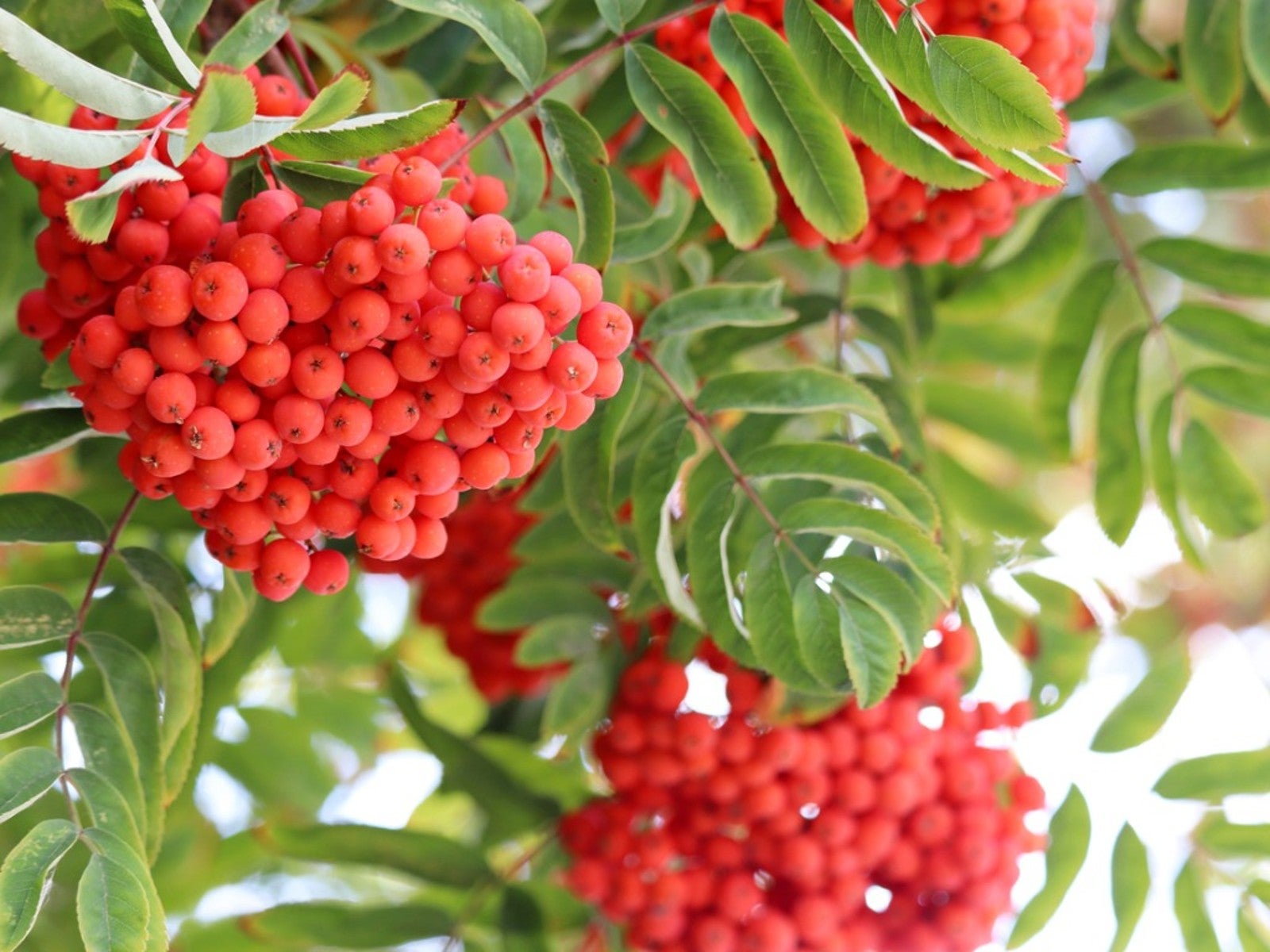European Mountain Ash: Care For The Rowan Tree


European mountain ash trees are not in the ash family, though there is a marked resemblance between their leaves. They are often called rowan trees. These are elegant trees with a mystical history, and were planted outside of homes because the rowan tree berries were reputed to keep witches and evil away.
Are mountain ash and rowan trees the same? They are exactly the same tree. Read on for more information on these trees.
European Mountain Ash
European mountain ash trees are not true ash trees, nor is the tree found in the ash genus, Fraxinus. Rather, the tree’s botanical name is Sorbus aucuparia and it is native to Europe and Asia, not North America. However, the tree has been planted in Canada and the northern US as an ornamental and it has naturalized there.
Mountain ash trees are small, deciduous trees that grow to 40 feet (13 m.) with compound leaves. They have narrow canopies while young but fill out as they mature, growing to 25 feet (7 m.) wide.
Rowan Tree Growing Conditions
Many in Europe, especially England, refer to this tree as a rowan tree, which can be confusing. Are mountain ash and rowan trees the same? They are.
Both these terms are common names used for Sorbus aucuparia trees, which thrive in relatively cool-winter areas like U.S. Department of Agriculture plant hardiness zones 3 through 6. That means that rowan tree growing conditions are the same as mountain ash growing conditions, and that European mountain ash care will also be rowan tree care.
These trees prefer a full sun location, but they can grow in light shade. The ideal rowan tree growing conditions include well-drained, acidic soil and adequate irrigation.
Sign up for the Gardening Know How newsletter today and receive a free copy of our e-book "How to Grow Delicious Tomatoes".
Benefits of Planting Rowan Trees
The foliage of rowan trees is very appealing, with many leaflets making up each compound leaf. The pinnate leaves turn fiery colors in fall, from yellow to reddish-purple. The bark is smooth and silvery grey, and leaf buds are purple and hairy.
Rowan trees produce white flowers in spring that develop into the famous, blood-red rowan tree berries. It is these berries that gave rowan trees their mystic aspect, since they were long believed to keep black magic and curses away.
Rowan/European Mountain Ash Care
These attractive trees do not require excessive maintenance. On the other hand, they are subject to attack by a number of pests. These include leaf-sucking pests like aphids and sawfly larvae as well as scales.
European mountain ash tree diseases can be an even greater problem. They are vulnerable to bacterial fire blight, which causes leaves at the tips of branches to wilt and infected branches looked scorched. If the tree is girdled as the bacteria move into the trunk, it will die. Part of European mountain ash care is avoiding high nitrogen fertilizers that increase vulnerability to this disease.
Rowan trees are also susceptible to scab, a disease that causes severe defoliation. They can also get various fungal diseases that result in twig and trunk cankers.

Teo Spengler is a master gardener and a docent at the San Francisco Botanical Garden, where she hosts public tours. She has studied horticulture and written about nature, trees, plants, and gardening for more than two decades, following a career as an attorney and legal writer. Her extended family includes some 30 houseplants and hundreds of outdoor plants, including 250 trees, which are her main passion. Spengler currently splits her life between San Francisco and the French Basque Country, though she was raised in Alaska, giving her experience of gardening in a range of climates.